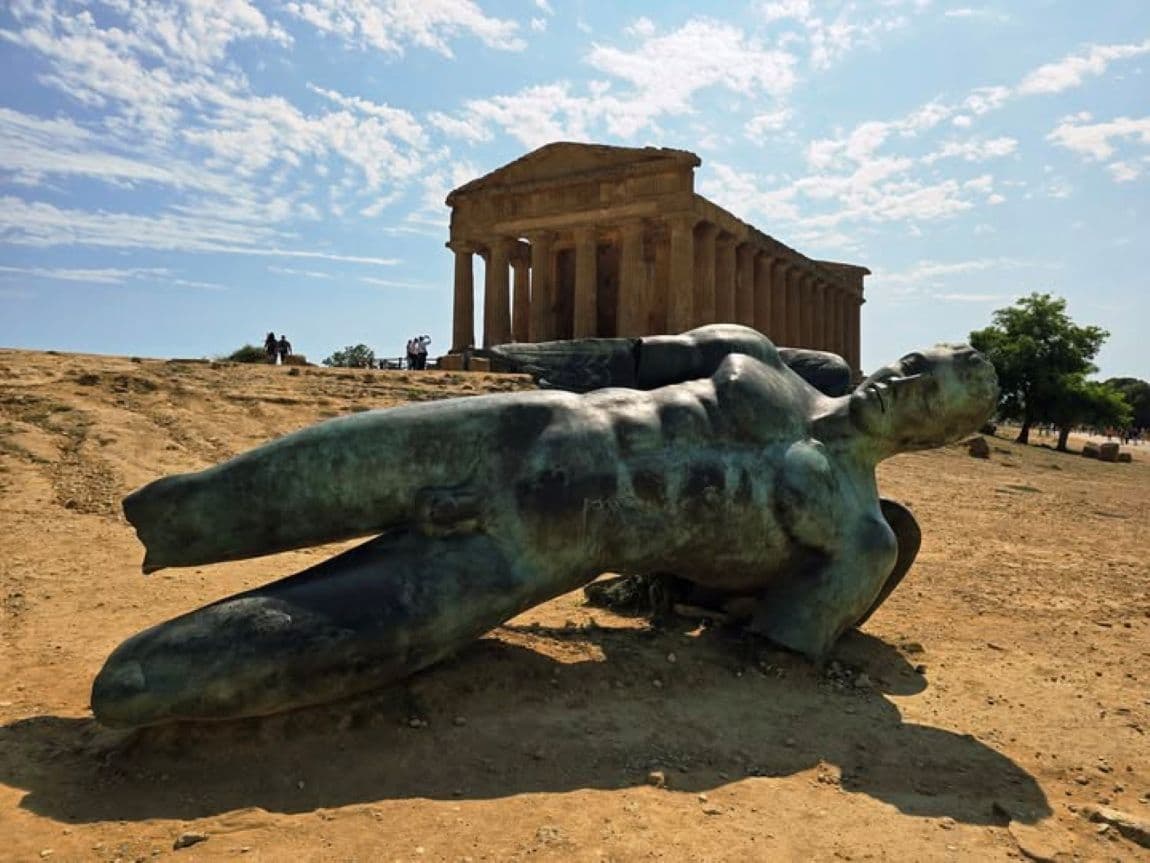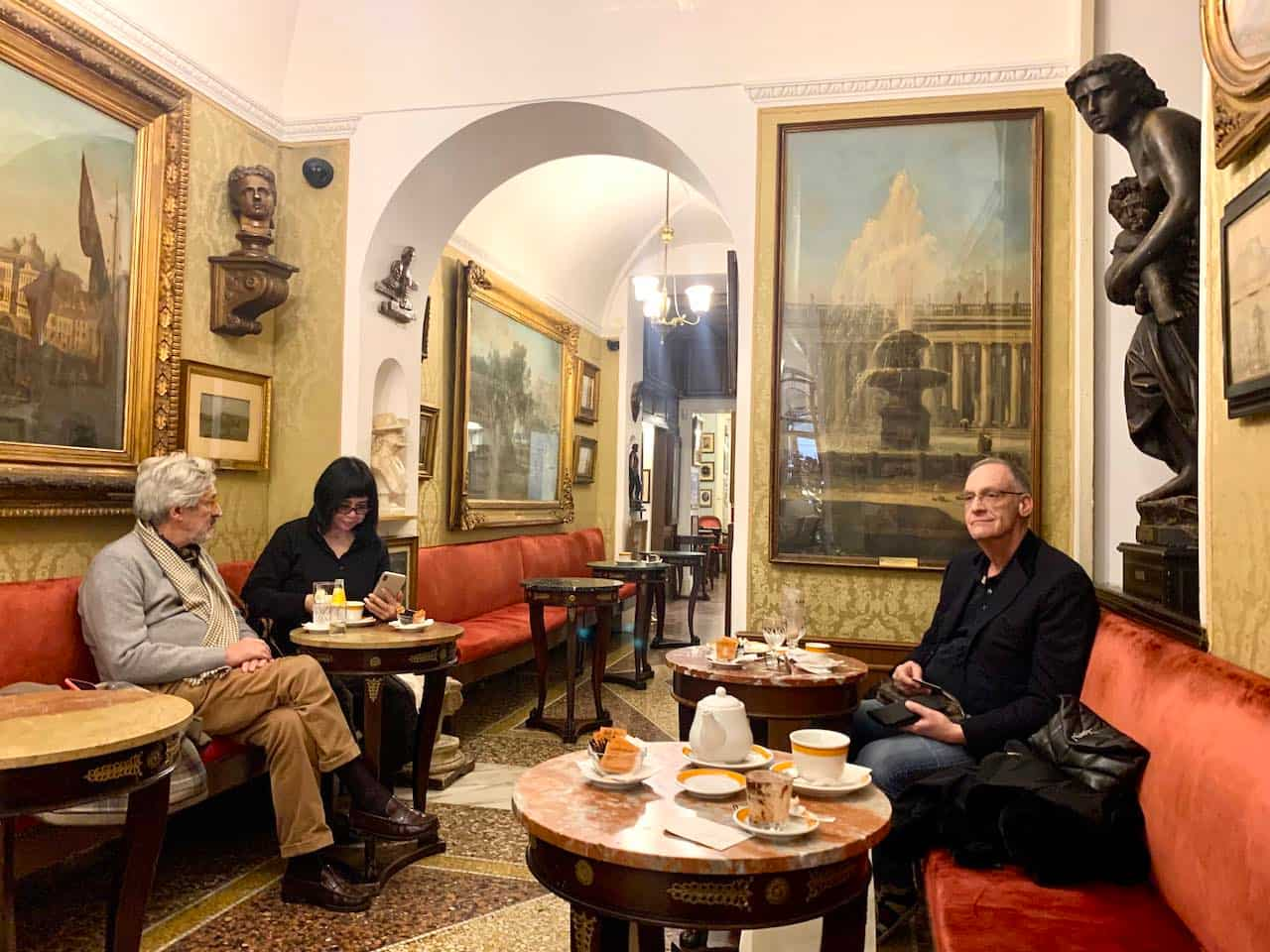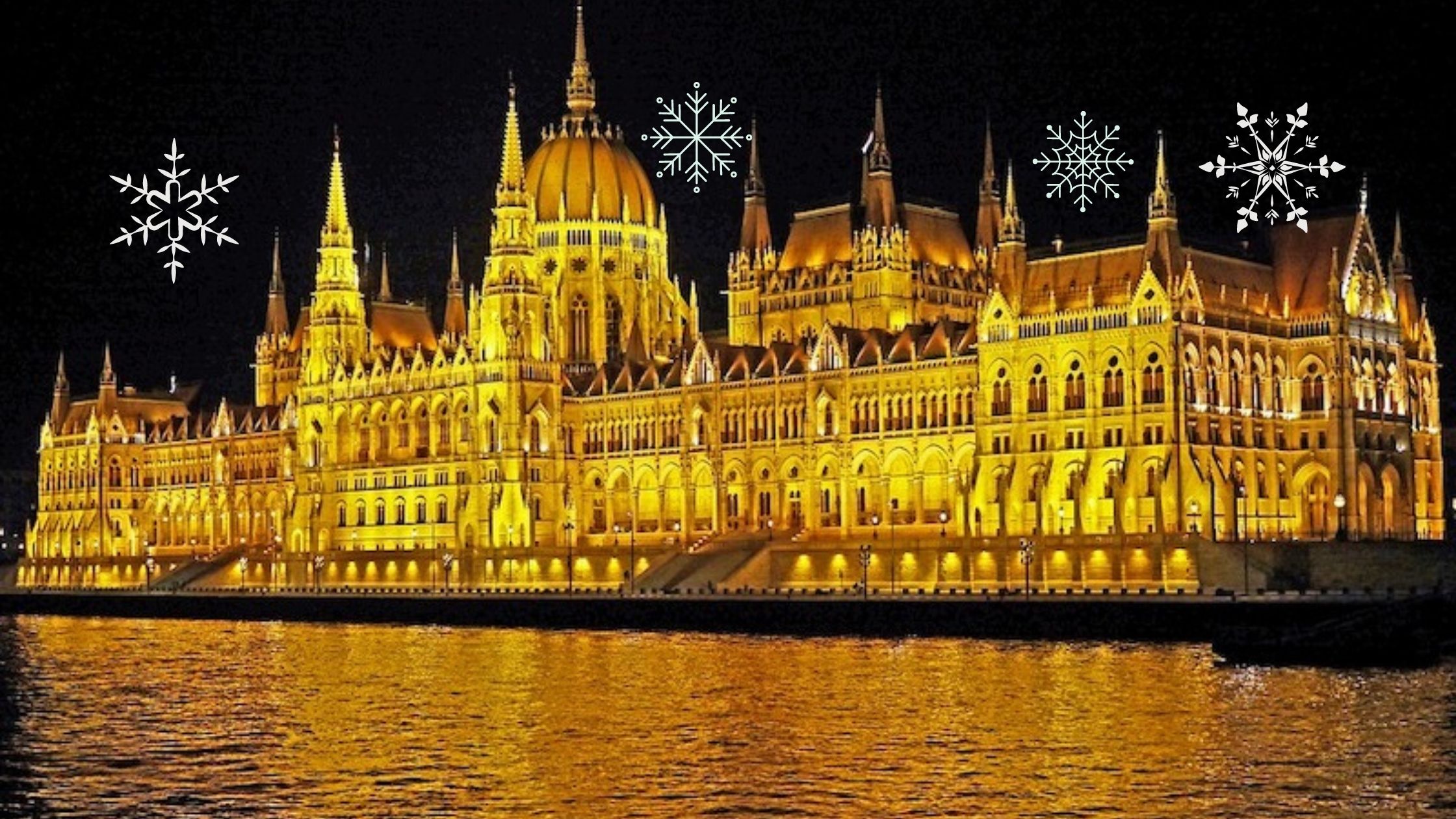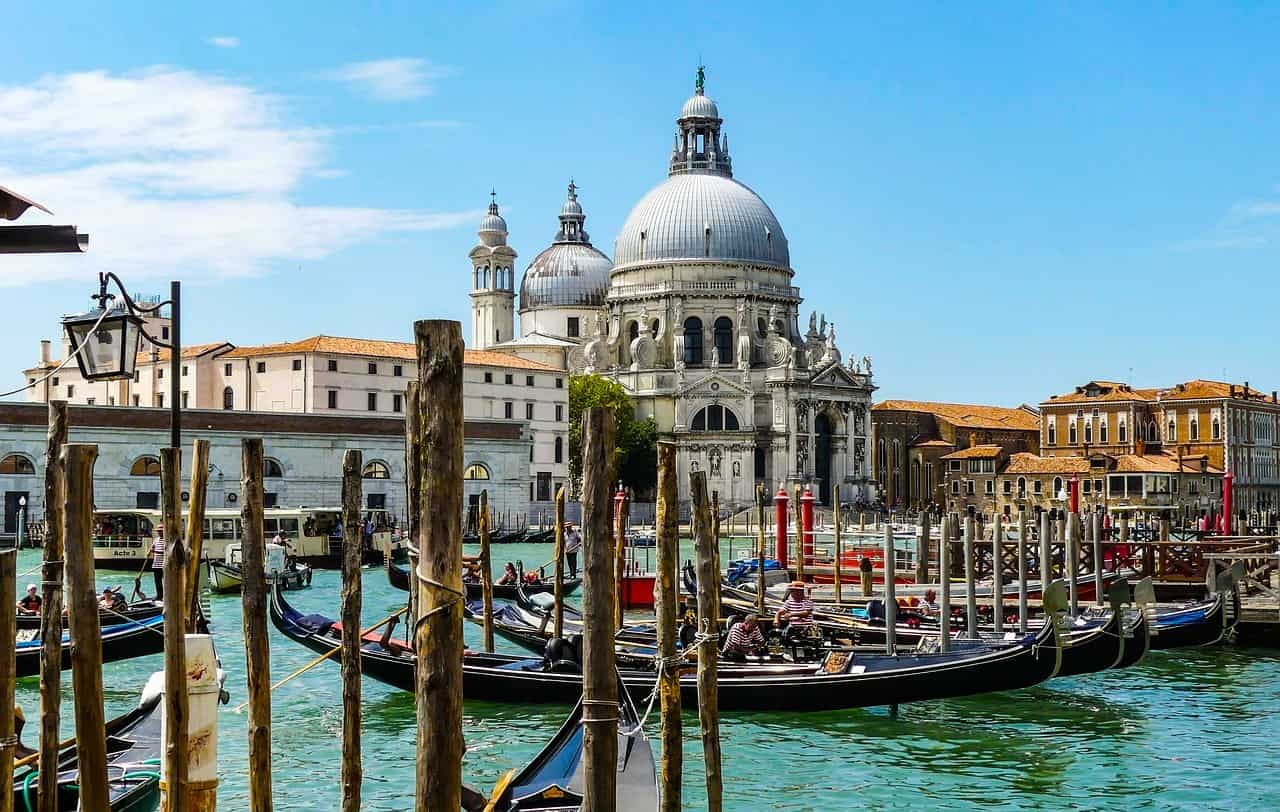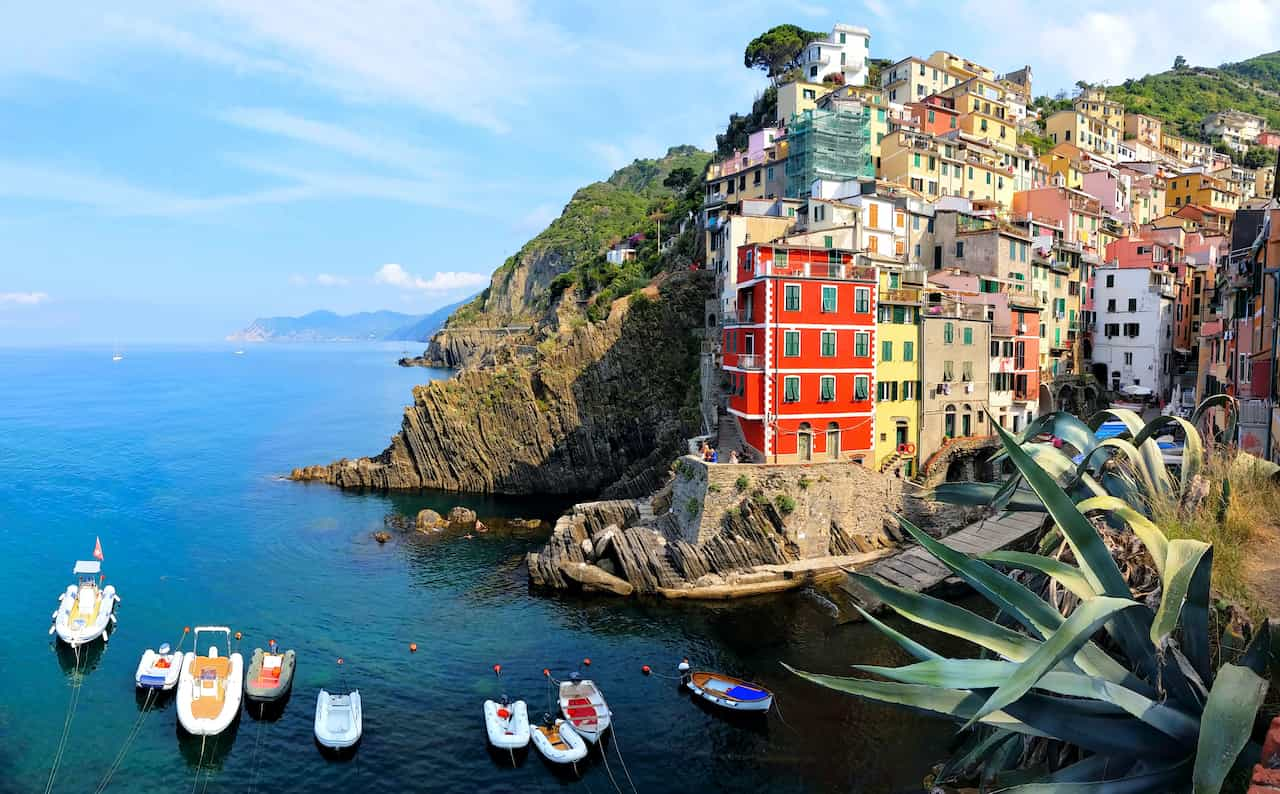Discover Ragusa Sicily NOW! Bucket-List Things to Do in This UNESCO Baroque Trail Masterpiece
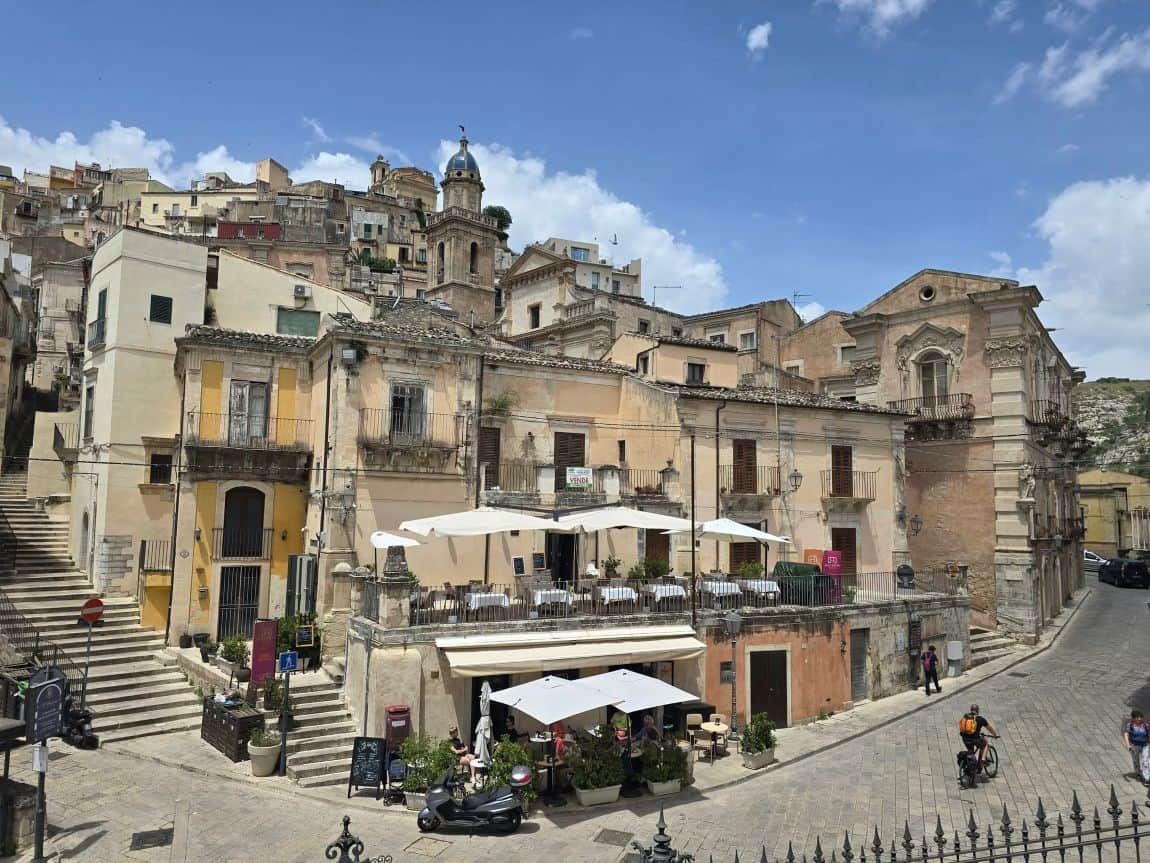
Things to Do in Ragusa Sicily: A Complete Travel Guide to Ragusa, A Jewel of Sicily’s Baroque Trail!
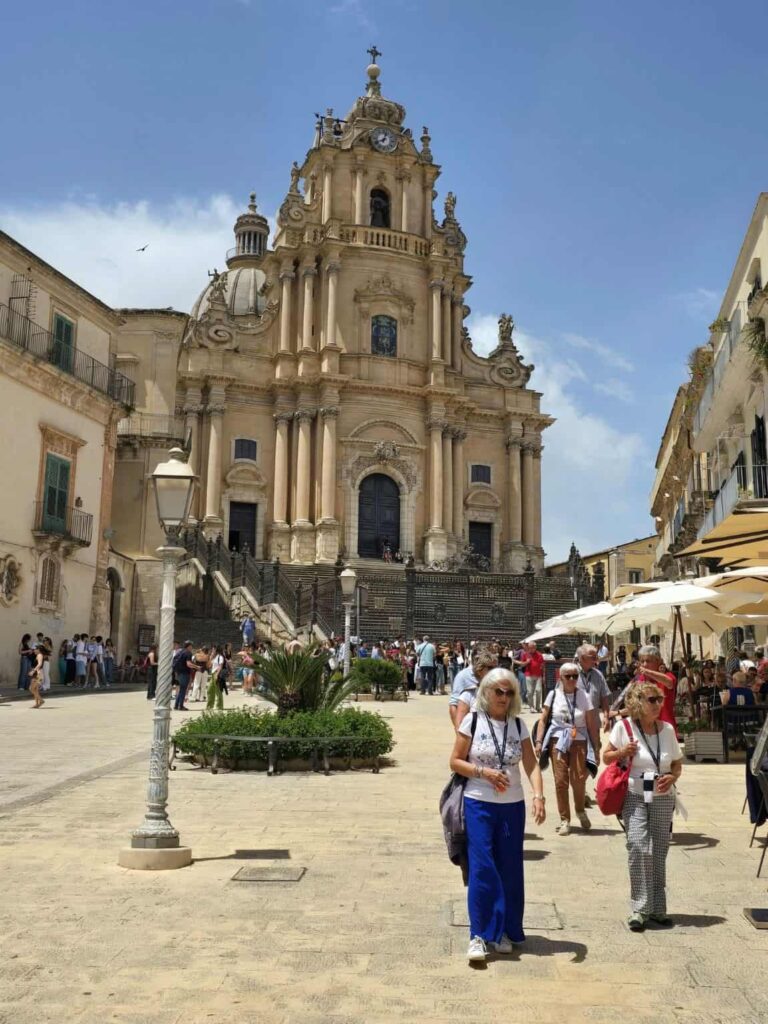
Located in southeastern Sicily, Ragusa is a UNESCO World Heritage Site, recognized along with seven other towns in the Val di Noto for their outstanding Late Baroque architecture. Ragusa‘s unique structure — split between Ragusa Superiore (the modern upper town) and Ragusa Ibla (the historic lower town) — sets it apart from anywhere else on the island. These two districts are divided by a deep ravine and connected by a steep stairway and four historic bridges. It’s no wonder that Ragusa is often called “La Città dei Due Anime” — The City of Two Souls.
Ragusa is a must-see stop on Sicily’s Baroque Trail. Its striking cityscape has served as a backdrop in several Italian films and TV series. Most famously, Ragusa appears in the popular television adaptation of Inspector Montalbano, with many scenes shot in Ragusa Ibla.
Ragusa was one of the most atmospheric stops on my epic road trip across Sicily. After visiting the mosaics of Villa Romana del Casale (1 hour and 35 minutes away), exploring the ancient ruins of Agrigento (2 hours and 20 minutes away), and walking among the temples at the Valley of the Temples (2 hours and 15 minutes away), I arrived in Ragusa ready to see something different. What I found was a town with two souls, a dramatic setting, and some of the most beautiful Baroque architecture in all of Italy.
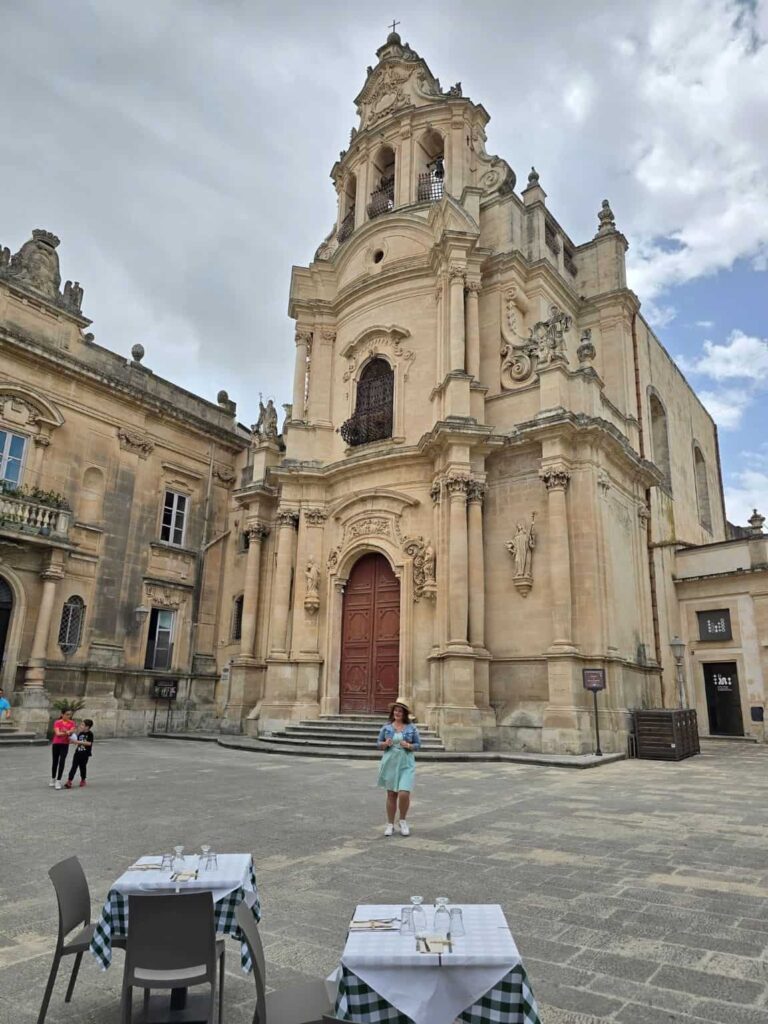
THIS POST MAY CONTAIN COMPENSATED LINKS. PLEASE READ MY DISCLAIMER FOR MORE INFO.
Why Visit Ragusa
Ragusa, a UNESCO World Heritage City in Sicily, is widely considered one of the most beautiful towns in Italy. Its picturesque alleys, elegant Baroque palaces, and ornate Baroque churches (about 50 churches!) are enhanced by a peaceful atmosphere and spectacular views. The unique geography — two towns carved into and around a limestone gorge — gives Ragusa a cinematic quality. The city offers a combination of historical intrigue, Baroque splendor, and authentic Sicilian life that few destinations can match.
Over the centuries, Ragusa has attracted philosophers, nobles, and artists who admired its intellectual culture. Today, it continues to draw writers, filmmakers, and travelers in search of beauty and depth.
A Brief History of Ragusa
Ragusa’s roots go back to prehistoric times, but its modern form was shaped by disaster. In 1693, a massive earthquake leveled much of southeastern Sicily. Ragusa’s citizens chose two different paths in rebuilding: some relocated uphill and created Ragusa Superiore, with a more modern street plan; others rebuilt on the original site, preserving the medieval street layout of Ragusa Ibla. This split created the dual character the city is known for today. The rebuilding effort was led by local aristocrats and architects, who brought to life a Baroque masterpiece that remains intact to this day.
Things to Do in Ragusa Sicily
Exploring Ragusa means diving into a rich world of baroque churches, noble palaces, hidden gardens, and sweeping views that seem to appear around every corner. Whether you’re climbing viewpoints, riding a charming tourist train, or learning to cook Sicilian dishes in a local’s home, Ragusa turns sightseeing into magic.
Start at the Cathedral of St. John the Baptist in Ragusa Superiore

This 18th-century Cathedral of St. John the Baptist (Cattedrale di San Giovanni Battista) is the focal point of Ragusa Superiore. Built on a grand scale, it features an impressive Baroque façade and a bell tower that rises above the city. Climb the 129 steps to the top for panoramic views over Ragusa and the surrounding countryside. Inside, the cathedral has a light-filled nave with ornate stucco work and a richly decorated altar. It’s a great introduction to Ragusa’s architectural style.
Admire the Baroque Details at Palazzo Zacco in Ragusa Superiore
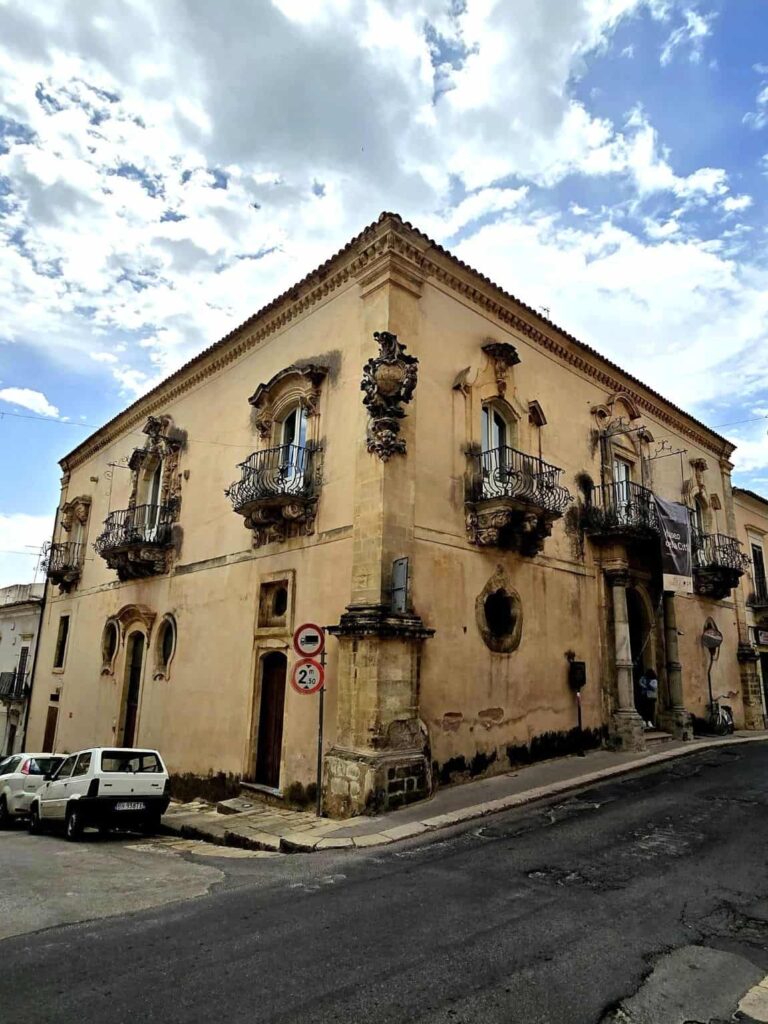
An outstanding example of Baroque civic architecture, Palazzo Zacco is best known for its elaborate balconies supported by grotesque faces and mythological figures. The building once belonged to a noble family and now houses cultural exhibitions. Even if the interior is closed, the exterior is worth seeing for its artistic detail. It’s one of the finest examples of Ragusan Baroque. A must-see while strolling through the upper town.
Spot the Grotesques at Palazzo Bertini in Ragusa Superiore
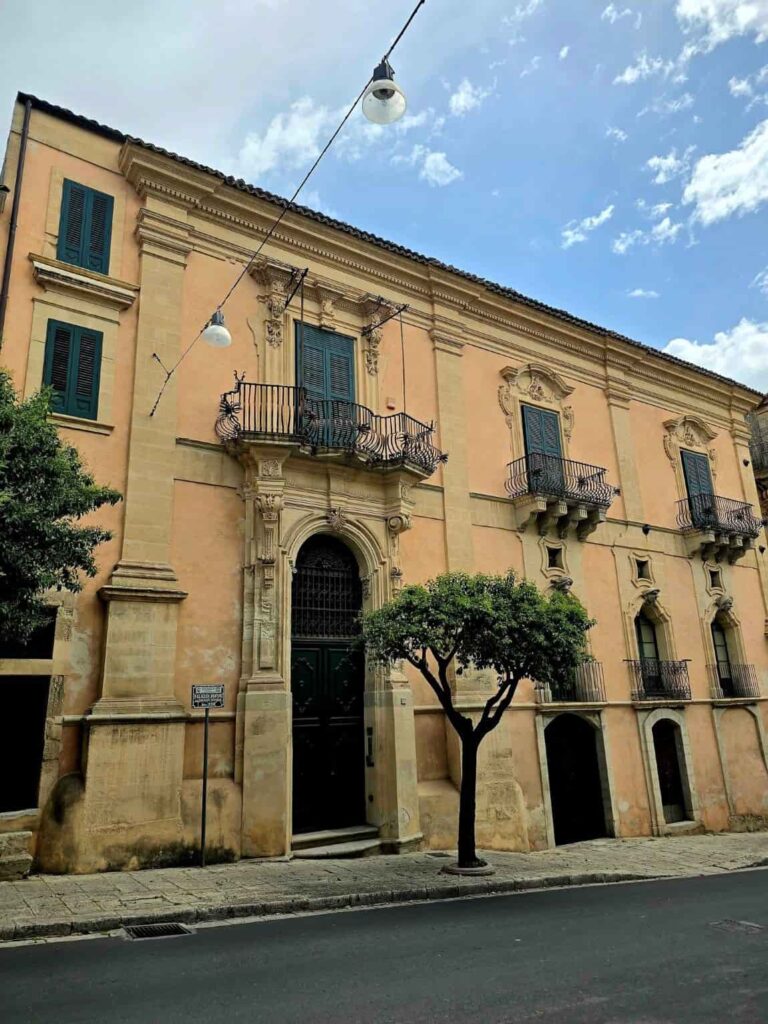
This small but significant palace is famous for its carved stone masks that represent a nobleman, a merchant, and a beggar — symbols of Sicilian society. The satire carved into the stone is subtle but striking. It’s easy to walk past if you’re not looking for it, so keep an eye out. The palace reflects both the artistry and the social commentary of 18th-century Ragusa. Another hidden gem in Ragusa Superiore.
Walk Down the 340 Steps of the Percorso delle Scale
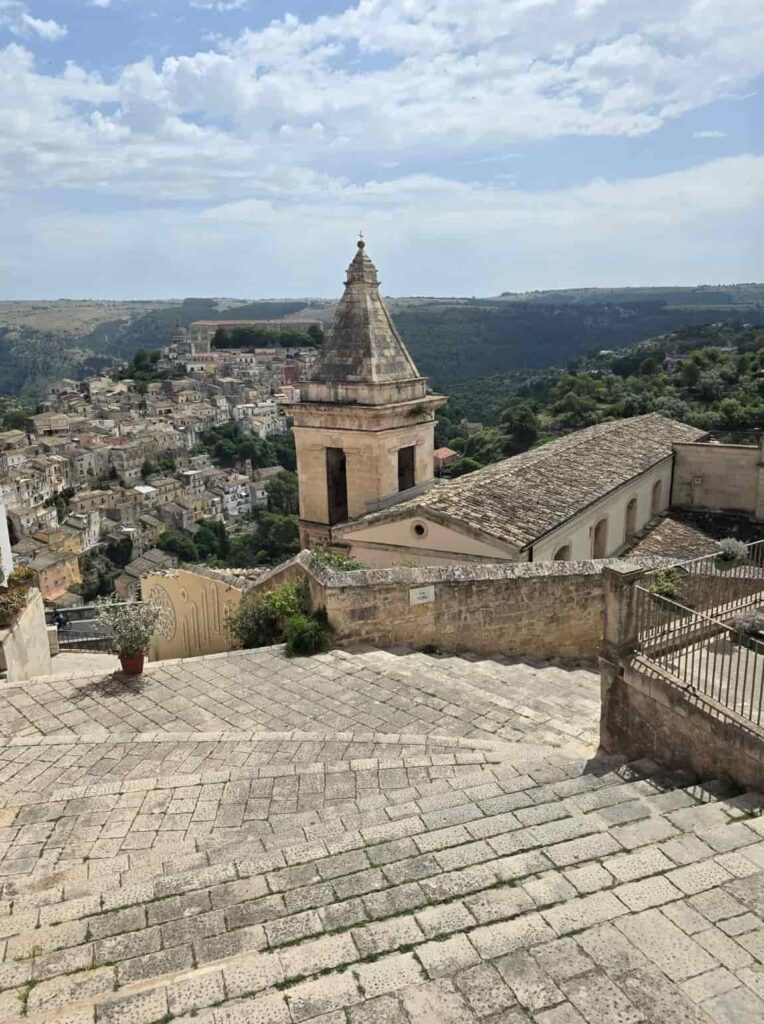
This scenic staircase of 340 steps links Ragusa Superiore to Ragusa Ibla. Along the way, you’ll pass historic churches, viewpoints, and stone houses clinging to the hillside. It’s a physical effort, but worth every step. The descent gives you views across the ravine and into the heart of Ibla. Ideal for photographs and getting a real feel for the city’s layout. Walk the steps down from Ragusa Superiore to Ragusa Ibla. On your way back, take a local bus. The bus leaves outside Giardino Ibleo.
Visit the Church of St Mary of the Stairs
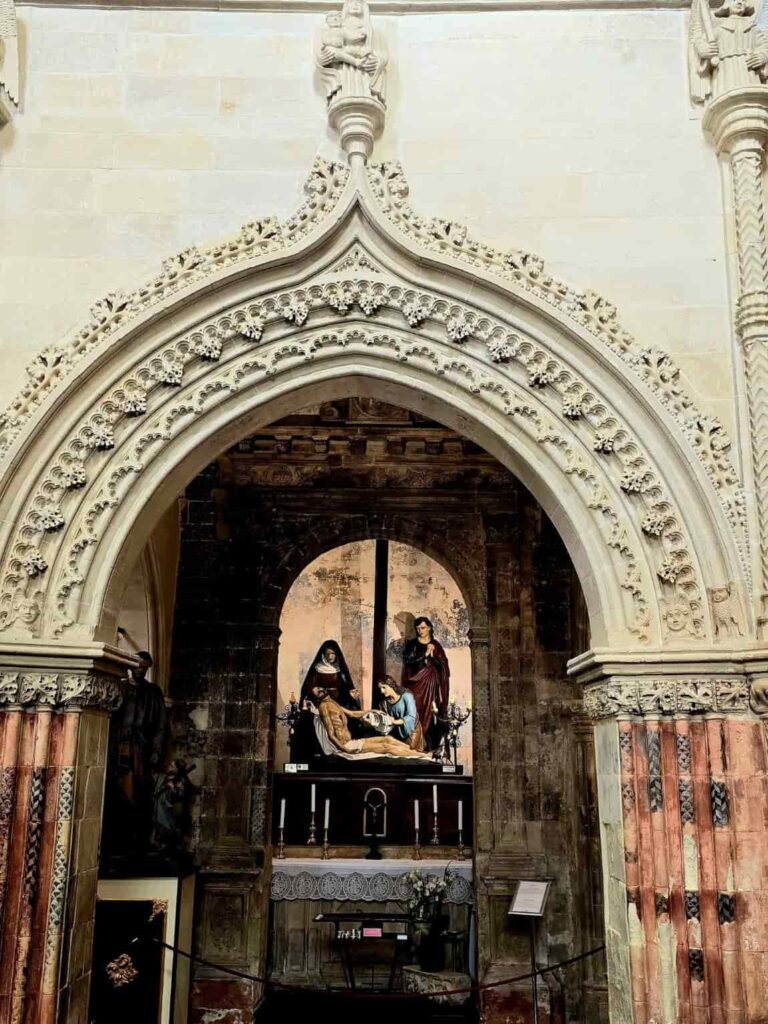
Located along the stairway between the two towns, the Church of St Mary of the Stairs (Chiesa di Santa Maria delle Scale) is a blend of medieval and Baroque styles. It’s especially known for its three Sicilian Gothic portals — rare survivors of the 1693 earthquake. The church offers spectacular views of Ragusa Ibla from its terrace. Inside, the design is simple, but the setting and history are the highlights. A peaceful place to pause on your way down from Ragusa Superiore to Ragusa Ibla.
Enjoy the views from the Mirador de Ragusa Ibla (Viewpoint of Ragusa Ibla)
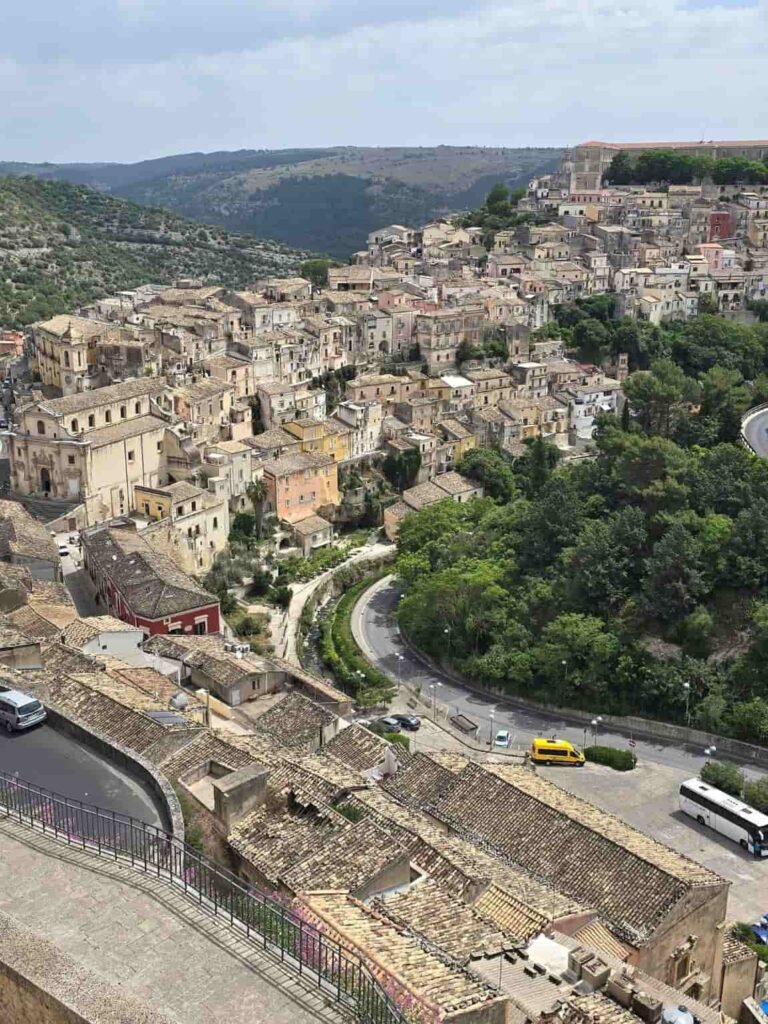
This panoramic viewpoint offers a postcard-perfect view of the rooftops of Ragusa Ibla. Visit at sunset for golden light over the stone buildings. The mirador is a popular photo stop, and for good reason. It gives context to the city’s topography and shows the dramatic contrast between the upper and lower towns. Don’t miss it.
See the Palazzo della Cancelleria (Ragusa Ibla)
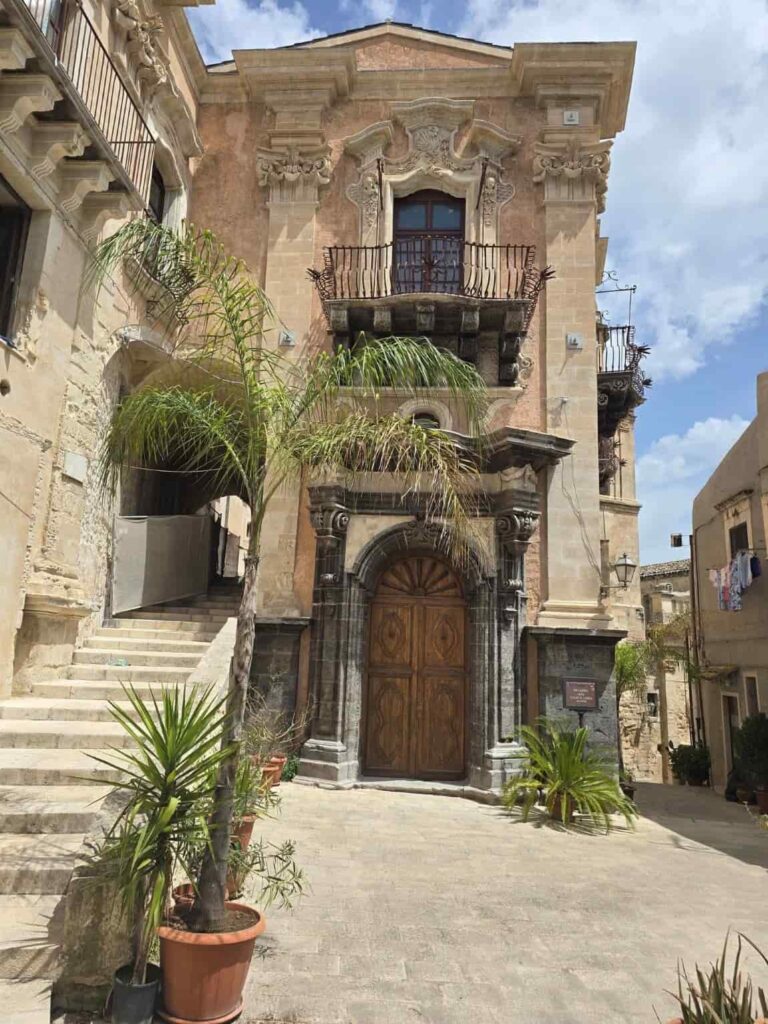
The Chancellery Palace (Palazzo della Cancelleria) is a stately Baroque palace in Ragusa Ibla, formerly the chancellery of the local government. The façade is elegant and symmetrical, with ornate balconies. While not always open to the public, it remains an important part of Ragusa’s civic history. Even just viewing it from the outside gives a sense of the administrative and cultural power once concentrated here.
Step Inside the Church of Saint Mary of Itria
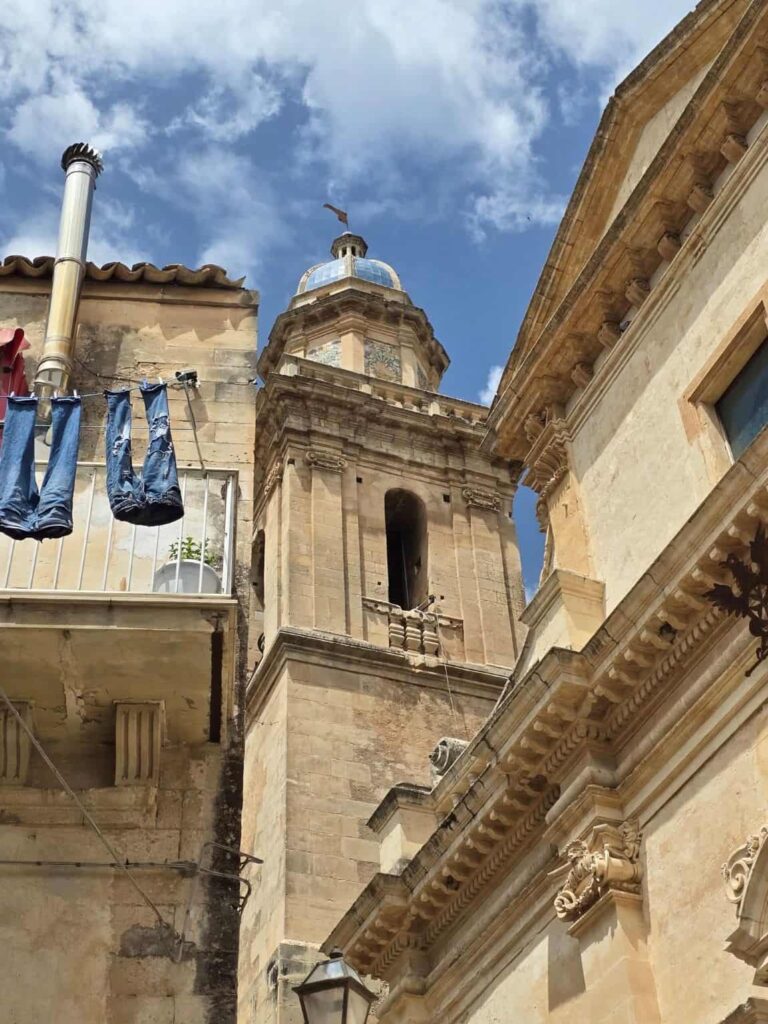
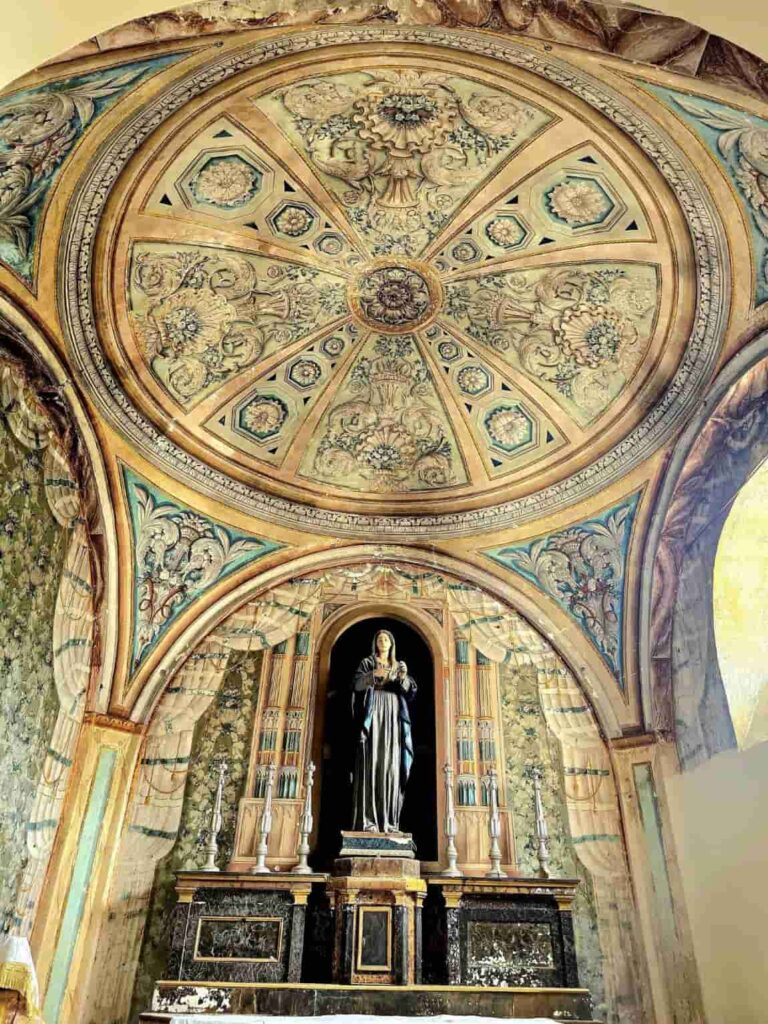
Tucked into a quiet corner of Ragusa Ibla, the Church of Saint Mary of Itria (Chiesa di Santa Maria dell’Itria) offers an interior that is intimate, richly decorated, and full of atmosphere. Built by the Knights of Malta, the church blends religious significance with distinctive design. The Church of Santa Maria dell’Itria is easily recognizable by its vibrant blue-tiled dome. It’s one of Ragusa’s most photogenic landmarks. Inside, you’ll find an elegant single nave adorned with baroque stucco work, gilded altars, and delicate paintings that reflect the deep Marian devotion of the local community. Floral motifs and soft pastel hues throughout the space create an atmosphere of warmth and quiet reverence.
Gaze at the Balconies of Palazzo Cosentini (Ragusa Ibla)
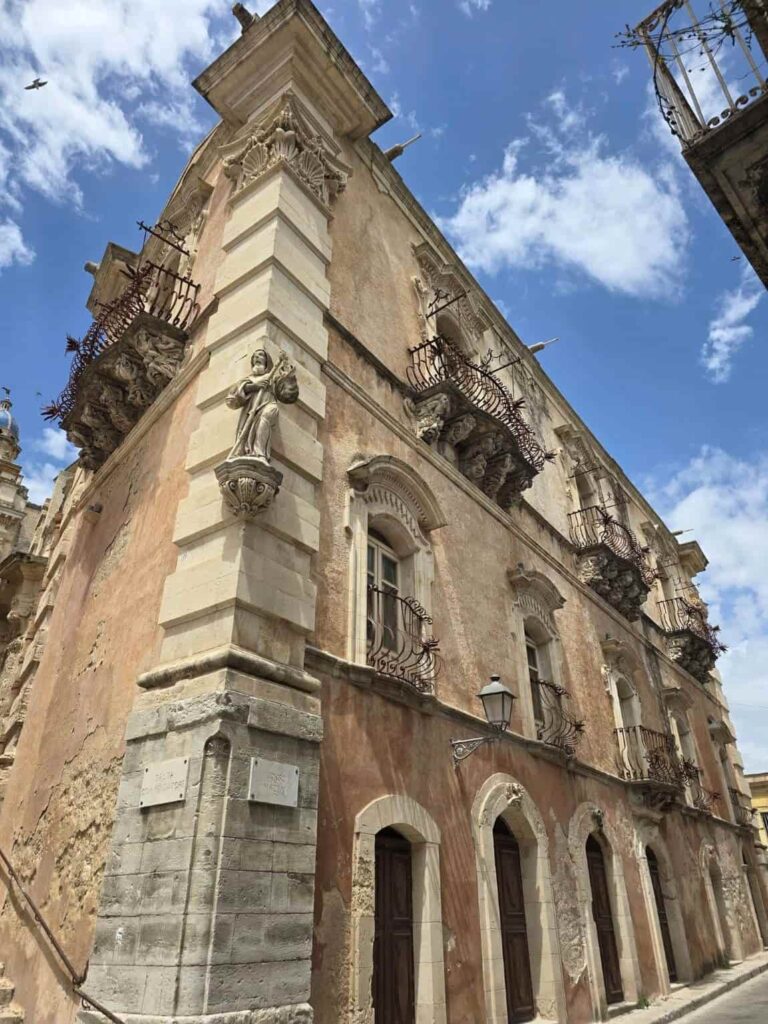
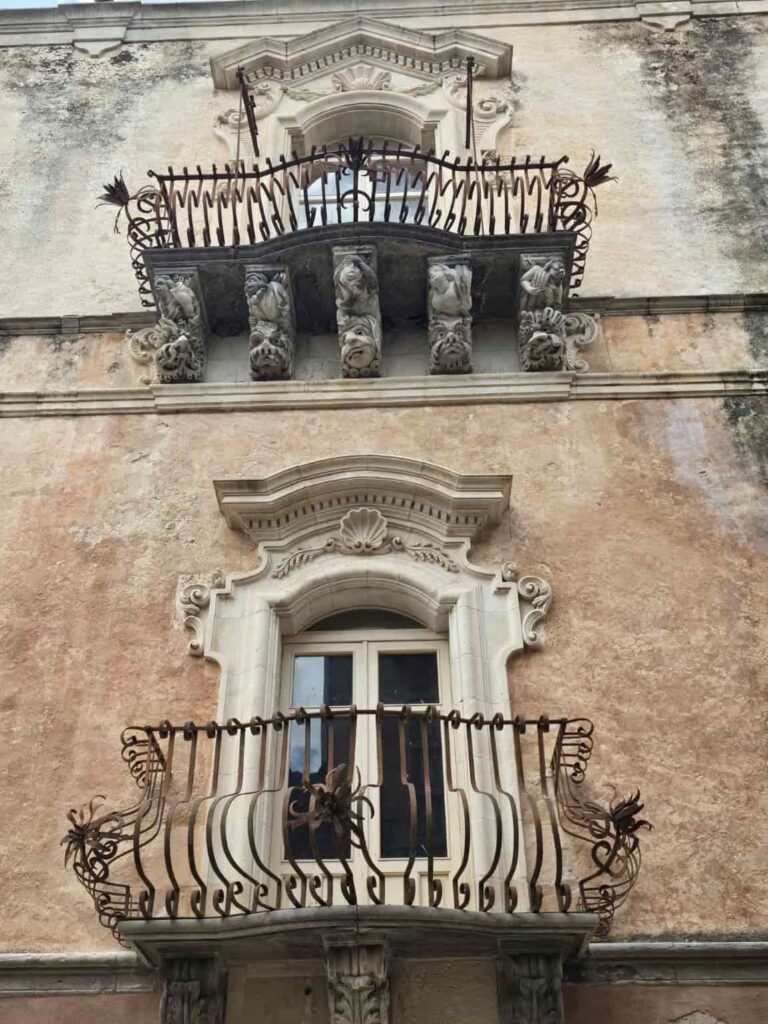
This 18th-century palace is a highlight of Ragusa Ibla. Its balconies are masterpieces of Sicilian Baroque, with detailed carvings of grotesques and mythological scenes. Look up to see devils, musicians, and animals in intricate stonework. The Consetini Palace is occasionally open for exhibitions. It’s one of the best-preserved Baroque buildings in the town.
Visit the Church of the Holy Souls in Purgatory
Built after the earthquake of 1693, the Church of the Holy Souls in Purgatory (Chiesa delle Anime Sante del Purgatorio) has an unusual façade with a curved pediment and fine stone detailing. Inside, the altar features paintings related to the souls in purgatory, a theme popular in southern Italy. The church’s position along the path to Ragusa Ibla makes it easy to visit en route. It’s another fine example of the religious art and architecture of Ragusa. Quiet and atmospheric.
PS: Ragusa Tourist Board office is next to the Church of Holy Souls, where you can get a free Ragusa map and all the necessary info about Ragusa.
Check out the views of Belvedere Solarino
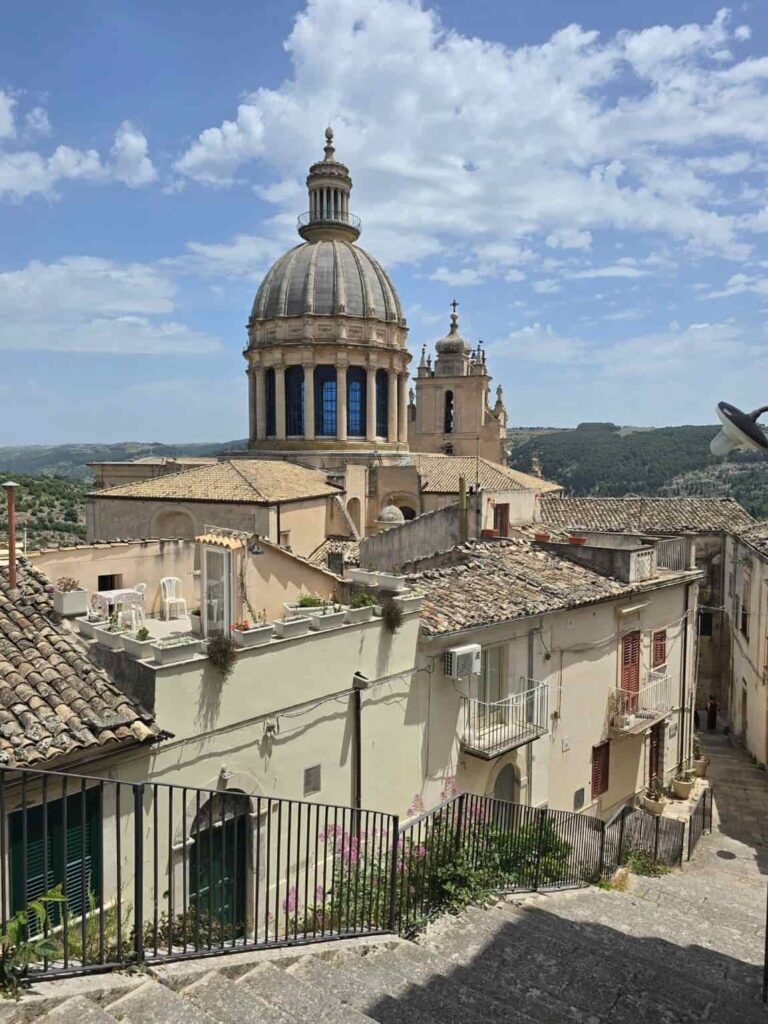
A viewpoint at the edge of Ragusa Ibla offering stunning views across the landscape and over the rooftops of the lower town. A great place to rest during a walking tour. On clear days, you can see for miles across the Iblean hills. The sunset here is particularly memorable. Bring a camera.
Stand in Awe at the Duomo di San Giorgio (Ragusa Ibla)
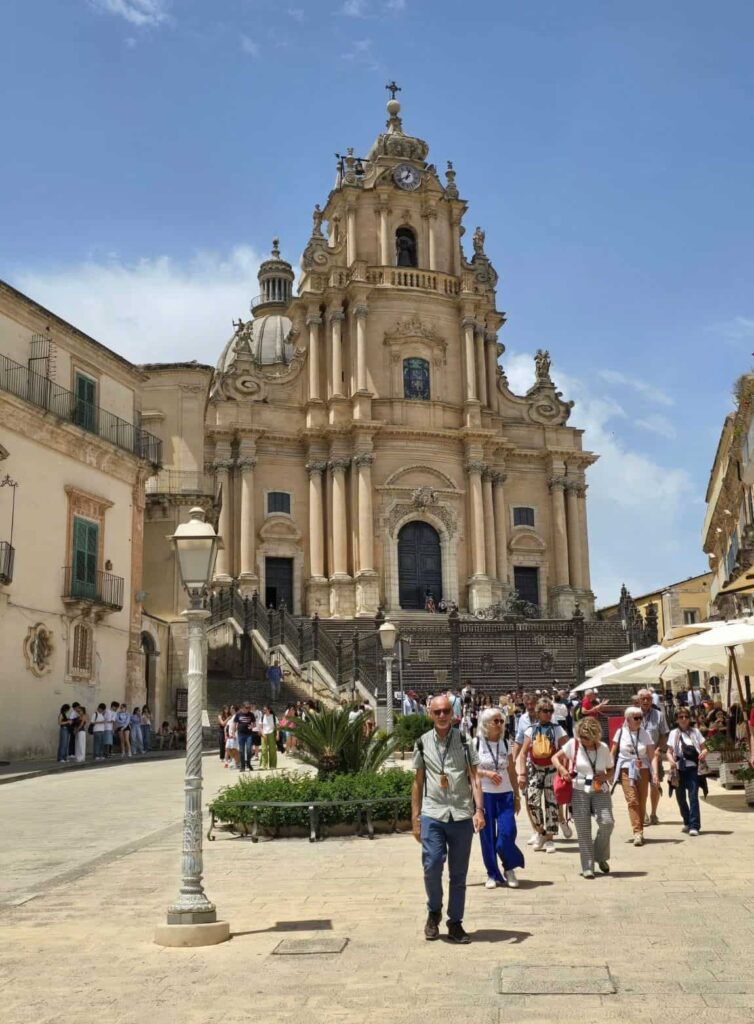
The Cathedral of San George (Duomo di San Giorgio) is the heart of Ragusa Ibla. This grand cathedral is a masterpiece of Sicilian Baroque, with a majestic staircase leading up to its columned façade and a soaring dome. The interior features vaulted ceilings, intricate frescoes, and a sense of grandeur fitting of the city’s status. The square in front is a great place to relax with a coffee. Essential for any visit.
Ride the Trenino Barocco for a Fun City Tour (Trenino Barocco)
Take a 30-minute ride on this small tourist train through the streets of Ragusa Ibla. Departing from Piazza del Duomo, Trenino Barocco is a fun and easy way to explore the town’s highlights. Tickets cost around €5. A good option if you’re short on time or want a break from walking. Families with kids will especially enjoy it.
Discover the Chiesa di San Giuseppe
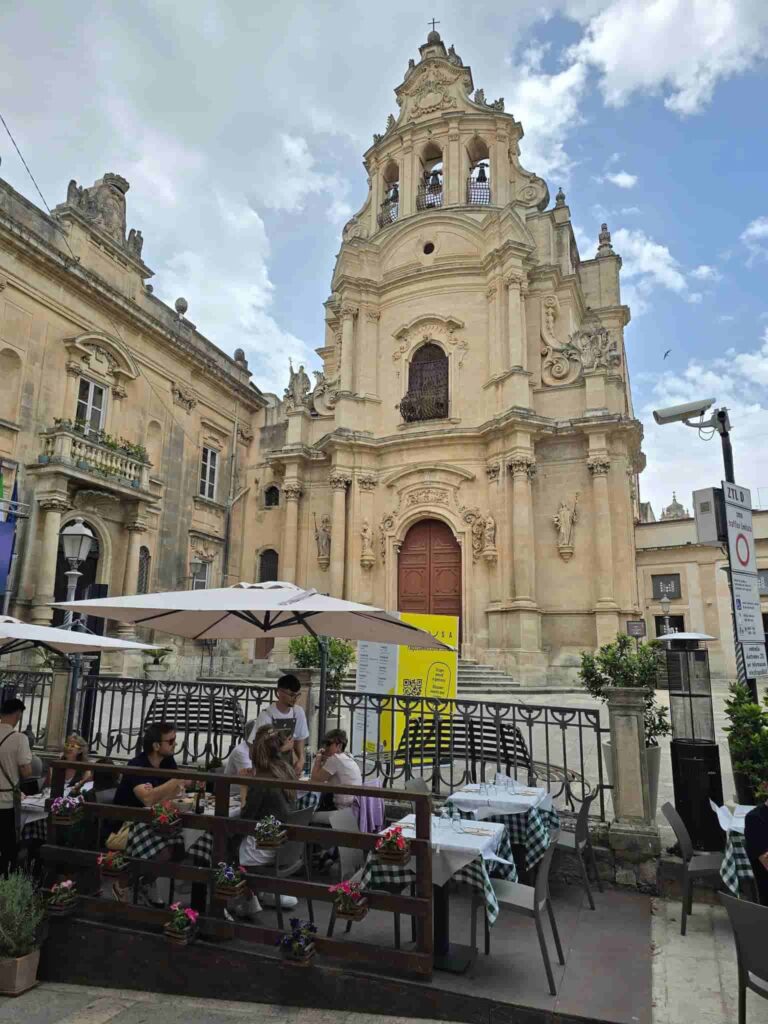
Tucked into Piazza Pola, just a short walk from the Duomo, the Chiesa di San Giuseppe is a jewel box of Sicilian baroque. Built by the Benedictine nuns, this church is compact but rich in detail, with a curved façade that dances with light. Inside, it’s a vision of ornate beauty—gilded stucco, delicate frescoes, and a serene, harmonious layout. It feels both grand and intimate, like a sacred space meant for quiet contemplation. If you’re already in love with Ragusa’s churches, this one will deepen that feeling.
Cool Down with Granita from Gelati Divini (Ragusa Ibla)
Stop at Gelati Divini near the Duomo for some of the best granita in Ragusa. Flavors range from classic lemon and almond to more inventive creations. It’s a perfect way to cool down during a hot afternoon. The gelateria is just off the main piazza. Try the pistachio — it’s divine. Read more: Granita Siciliana: Sicily’s Most Irresistible Dessert
Tour the Circolo di Conversazione
Founded in 1860, this elegant private club was a meeting place for Ragusa’s aristocrats. The exterior of Conversation Circle (Circolo di Conversazione) is classically refined, and the interior features frescoed ceilings and antique furnishings. It is occasionally open to visitors. Located right on the piazza near the cathedral. A fascinating look into Sicilian high society.
Dine Like Montalbano at Ai Lumi
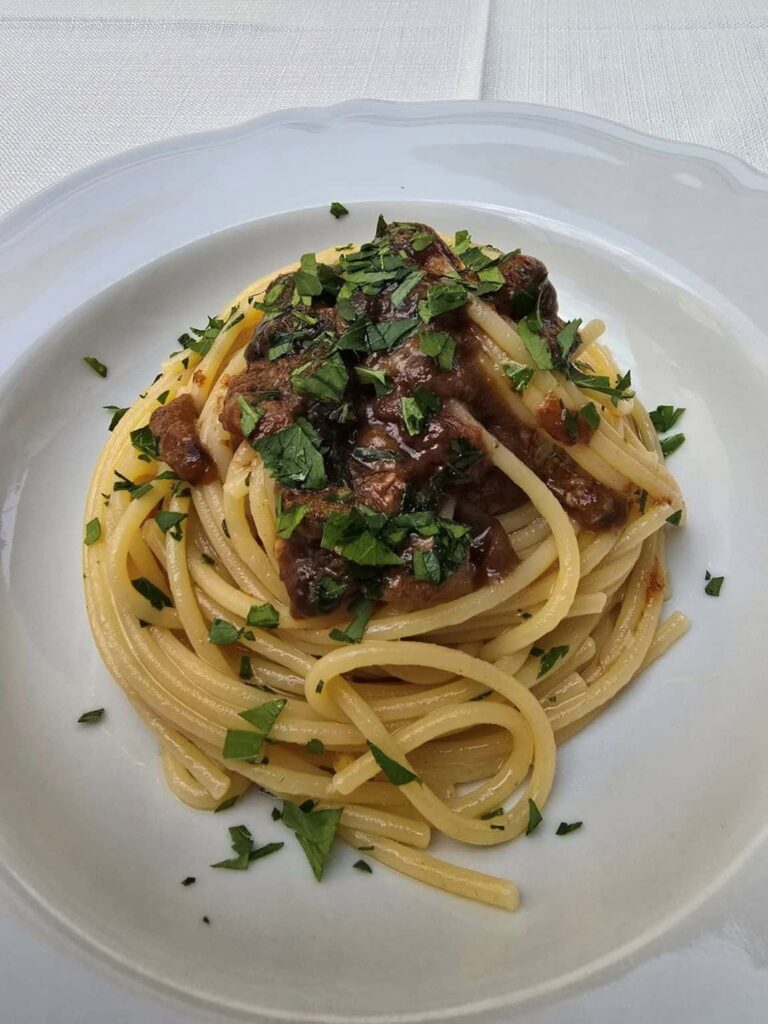
If you’re a fan of Inspector Montalbano, don’t miss the chance to eat at Ai Lumi, a charming restaurant featured in the series. The setting is warm and inviting, with rustic touches and soft lighting that make every meal feel special. The food is classic Sicilian—fresh seafood, handmade pasta, and regional wines. Sit outside if you can, and soak in the atmosphere that inspired so many stories.
Stroll Through Ibleo Garden
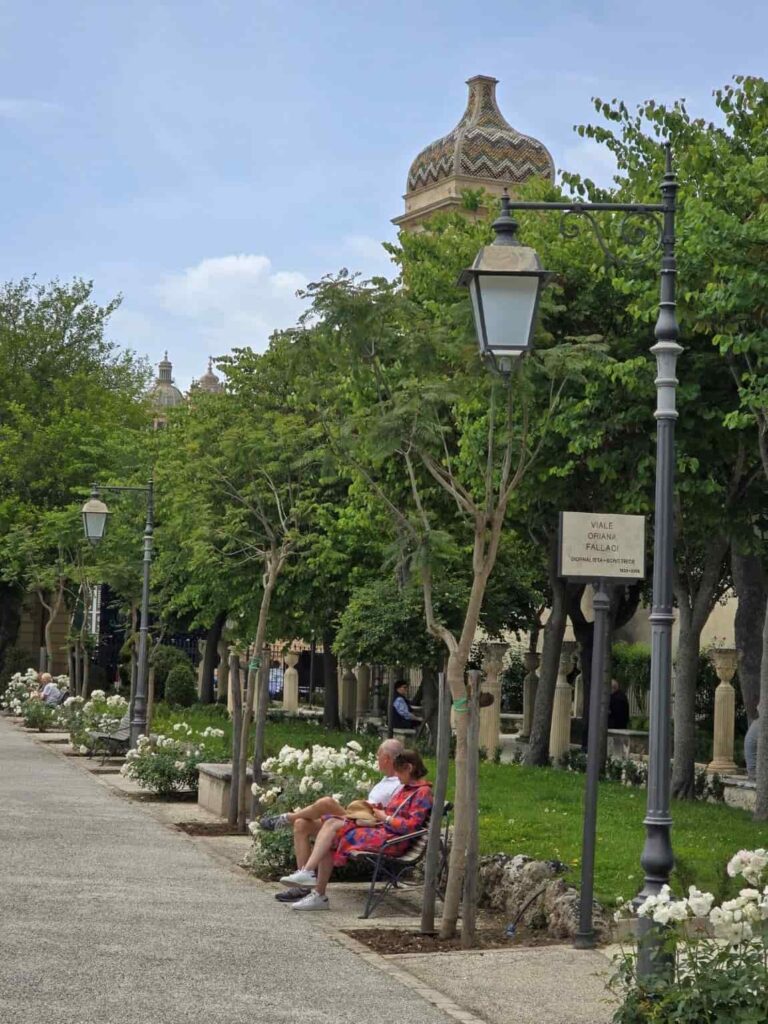
The Ibleo Garden (Giardino Ibleo) is more than a garden—it’s a sanctuary. Located at the edge of Ragusa Ibla, it offers manicured paths, sweeping views of the valley, and quiet corners perfect for unwinding. Locals come here to read, walk, or simply breathe. It’s also home to three small churches (the Church of Saint Agatha of the Capuchins, Church of Saint Vincent Ferre, and Church of Saint James the Apostle) and several elegant fountains, blending nature and history in one serene setting. If you need a break from sightseeing, this is your oasis.
Visit the Church of Saint James the Apostle
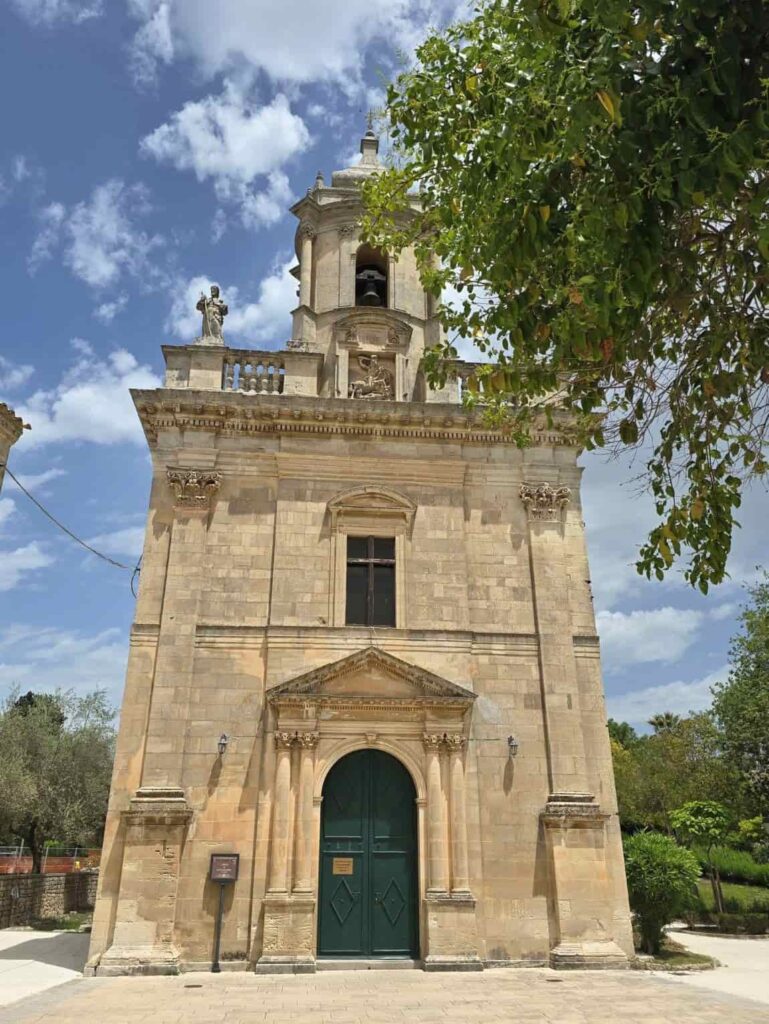
In the peaceful Giardino Ibleo stands the Church of Saint James the Apostle (Chiesa di San Giacomo Apostolo), a hidden treasure that many visitors miss. Originally built in the 12th century and rebuilt after the 1693 earthquake, it blends history with understated elegance. The interior is simple, with clean lines and soft light filtering in through small windows, creating a sense of peace.
Explore the Church of Saint Vincent Ferreri
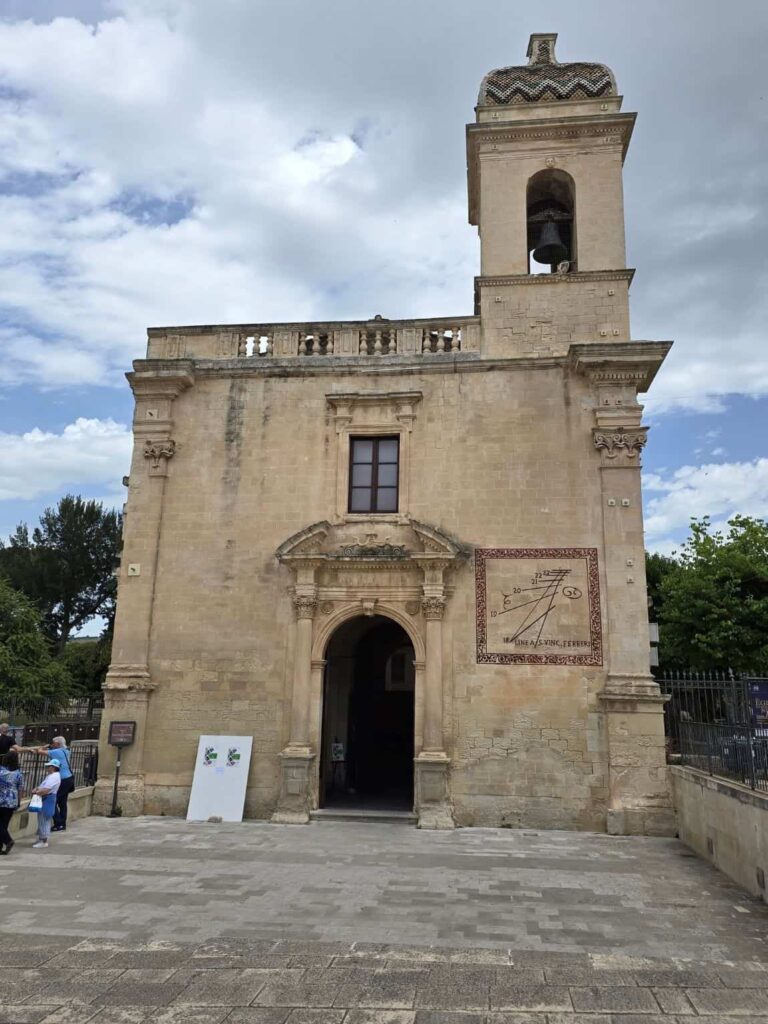
This small church is easy to overlook, but it’s one of Ibla’s true cultural spaces, often used for art exhibitions and concerts. The Church of Saint Vincent Ferreri (Chiesa di San Vincenzo Ferreri) sits beside an open square and is distinguished by its elegant bell tower and bright, clean lines. Step inside to see a beautifully restored interior where ancient stone meets modern use. It’s where the town’s past and present connect in meaningful ways. If there’s an exhibit or event, pop in—you may experience something completely unexpected.
Visit the Church of Saint Agatha of the Capuchins
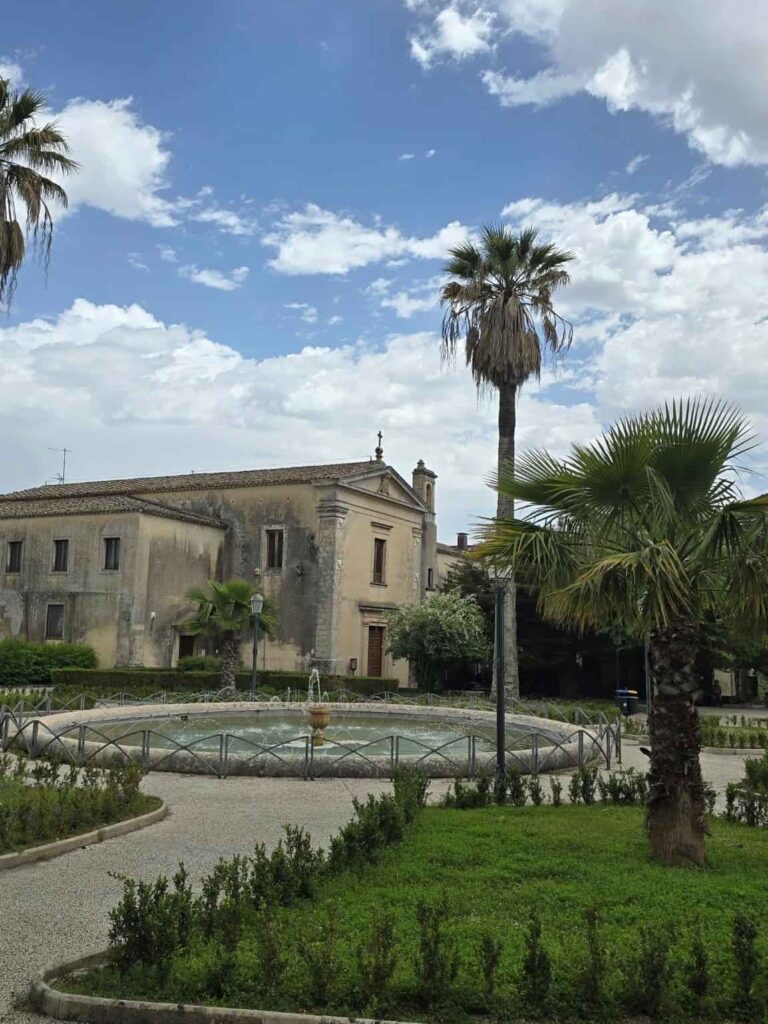
The Church of Saint Agatha of the Capuchins (Chiessa di Sant’Agata ai Cappuccini), with its adjoining convent, offers a more secluded and contemplative corner of Ragusa. Originally built in the 1500s, it has retained its quiet charm despite the centuries. Inside, the church is sparse but spiritually rich, with artwork that speaks of humility and devotion. It’s not a major tourist stop, and that’s part of its appeal—you can sit in silence and feel connected to the deeper rhythms of Sicilian life. If you’re looking to step off the beaten path, this is a beautiful place to do it.
See the Ancient Portal of San Giorgio in Ragusa Ibla
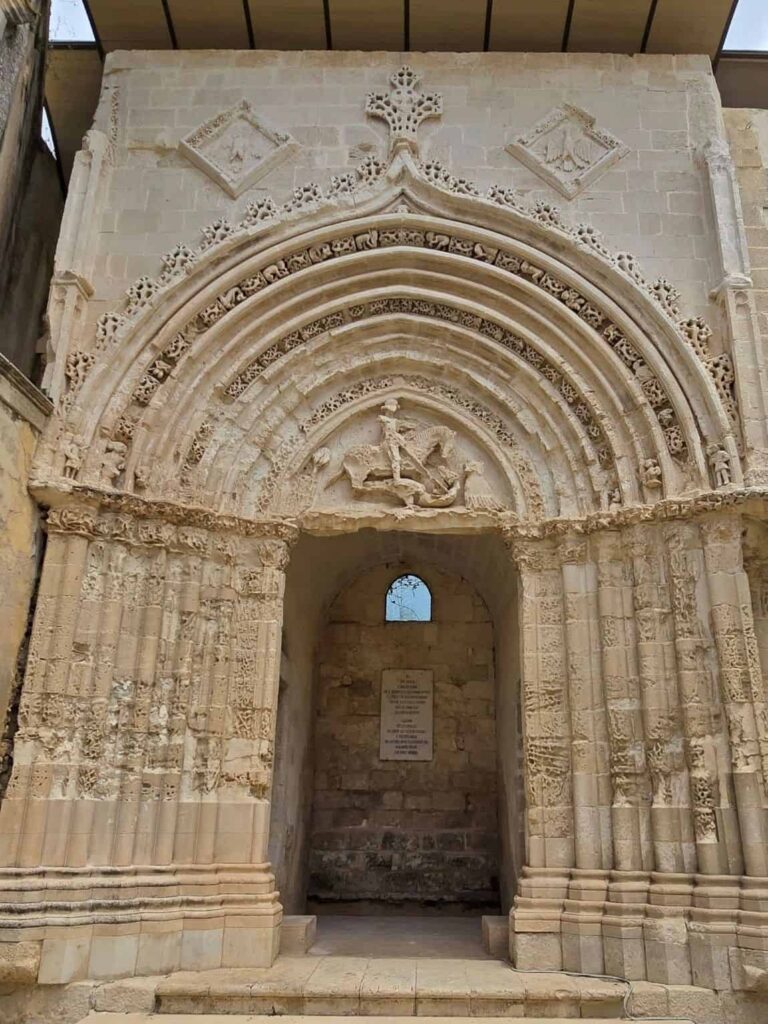
The Portal of Saint George (Portale di San Giorgio) is a remnant of the original cathedral destroyed in the 1693 earthquake. This Gothic portal is all that remains and stands as a haunting symbol of resilience. It’s located near the public garden – Giardino Ibleo. A quiet place for reflection. History lives in these stones.
Go For A Dining Experience at a Local’s Home
One of the best ways to experience Ragusa’s culinary tradition is by joining a local cooking class or dining experience. Learn how to make traditional Sicilian pasta or pizza in someone’s home, and enjoy an authentic meal with conversation and wine. It’s an unforgettable cultural exchange. You’ll gain insights into Sicilian food, family life, and hospitality. Book ahead.
Shop Ceramics at Ceramiche d’Arte di Caltagirone by Cinzia Girella
Ceramiche d’Arte di Caltagirone by Cinzia Girella is a great place to buy authentic hand-painted Sicilian ceramics in Ragusa Superiore. The ceramics combine traditional techniques from Caltagirone with a modern flair. Perfect for gifts or souvenirs. Prices are fair for handmade items. You’ll probably end up buying more than you planned.
What to Eat in Ragusa Sicily
Sicilian food is always a highlight, but Ragusa has its own unique flavors. The local cuisine blends ancient traditions with seasonal ingredients — think ricotta-stuffed ravioli, pork stews, wild herbs, and rich chocolate from nearby Modica.
One of my most memorable meals in Sicily was at Ai Lumi, right in Ragusa Ibla, where I indulged in an unforgettable sea urchin spaghetti — sweet, briny, and silky-smooth. For more refined dining, try Locanda Don Serafino, a Michelin-starred spot set in a converted cave. If you’re looking for traditional Sicilian trattoria fare, Trattoria La Bettola in Superiore serves homemade pasta and excellent caponata. Quattro Gatti is a local favorite, known for fresh antipasti and great wines. And don’t miss Gelati Divini for granita or artisanal gelato between sightseeing.
How Much Time Do You Need in Ragusa Sicily?
To experience both sides of Ragusa — and truly enjoy its atmosphere — I recommend at least one full day, ideally two days. With just one day, you can hit the highlights, but with two, you’ll have time to wander slowly, enjoy long meals, and take in the views without rushing.
How To Spend One Day in Ragusa
Start in Ragusa Superiore: visit the Cathedral of St. John, see Palazzo Zacco and Palazzo Bertini, then walk the Percorso delle Scale down to Ibla. Along the way, stop at Santa Maria delle Scale for views. In Ragusa Ibla, visit Duomo di San Giorgio, explore the palaces and smaller churches, ride the Trenino Barocco, and relax in Giardino Ibleo. Have dinner at Ai Lumi and watch the city glow at sunset from the Mirador.
How To Spend Two Days in Ragusa
Follow the one-day itinerary on your first day. On your second day, dive deeper: visit the Circolo di Conversazione, explore more churches like San Giuseppe and Sant’Agata ai Cappuccini, take a guided walking tour, shop for ceramics, and try a home cooking experience. End your day with an aperitivo at Piazza del Duomo or a meal at La Terrazza dell’Orologio, with views of the hills.
Where Is Ragusa, and How Do You Get There?
Ragusa is located in southeastern Sicily, in the Val di Noto region. It’s about:
- 90 km (1.5 hrs) from Catania
- 90 km (1.5 hrs) from Syracuse (Siracusa)
Read: The Ultimate Guide to Syracuse Italy - 30 km (40 minutes) from Modica
Read: A Complete Guide to Modica Sicily - 25 km (30 minutes) from Scicli
Read: A Complete Guide to Scicli, Sicily - 67 km (55 minutes) from Noto
Read: A Complete Guide to Noto Italy
The nearest airport is Comiso Airport (CIY) — just 20 km (30 minutes) from Ragusa — but it has limited flights. For more options, fly into Catania Fontanarossa Airport (CTA), which is well-connected to the rest of Europe and a common entry point for southeast Sicily.
I rented a car at Palermo Airport and visited Ragusa on my epic Sicily road trip. You can check out affordable rental cars at Palermo Airport here, Catania Airport here, and Comiso Airport here.
Getting to Ragusa Sicily
Renting a car is the easiest and most flexible way to explore Ragusa and its surrounding towns. The drive from Catania or Syracuse is scenic and straightforward. If you don’t drive, several guided tours are available:
- From Syracuse:
- From Catania:
Public buses and trains do run, but they’re infrequent and slow — not ideal if you’re on a tight schedule.
Getting Around Ragusa
The best way to explore Ragusa is on foot, especially in Ragusa Ibla, where cars are restricted (it is a ZTL zone!) and the charm lies in walking its stone streets. To make the most of your visit, consider joining a guided walking tour such as:
These tours often include local stories, hidden corners, and the best photo spots. If walking isn’t for you, the Trenino Barocco offers an easy alternative. Go to the Piazza del Duomo and hop on the Trenino!
Where to Stay in Ragusa Sicily
Whether you’re traveling on a budget or looking for luxury, Ragusa offers a range of excellent accommodations. Many hotels offer free parking, which is essential if you’re road-tripping.
- Luxury:
- Relais Antica Badia – A 5-star former palace with views over Ragusa Superiore. Historic charm, great service, and valet parking.
- Eremo della Giubiliana – Just outside town, this 12th-century estate offers countryside luxury, an onsite gourmet restaurant, and free parking.
- Mid-Range:
- San Giorgio Palace Hotel – Great location in Ragusa Ibla, beautiful rooms, and onsite parking. The views of the valley are stunning.
- Giardino Sul Duomo – Boutique hotel with a pool, located just behind the cathedral in Ibla.
When to Visit Ragusa
The best time to visit Ragusa is spring (April–June) or autumn (September–October) when the weather is pleasant and crowds are manageable. Summer can be very hot, especially in July and August.
If you want to experience local culture, time your visit for the Feast of San Giorgio, celebrated on the last weekend of May. The streets of Ibla come alive with music, processions, and fireworks. It’s one of Sicily’s most spectacular and heartfelt festivals.
What to Do Near Ragusa
Ragusa makes a great base for exploring southeastern Sicily. Nearby highlights include:
- Modica – 30 minutes away, known for its Aztec-style chocolate and beautiful Duomo di San Giorgio.
- Scicli – A Baroque gem with fewer tourists and stunning civic buildings.
- Castello di Donnafugata – A whimsical 19th-century castle surrounded by gardens, just outside Ragusa.
- Beaches of Marina di Ragusa – Sandy, relaxed beaches just 30 minutes south.
- Syracuse and Ortigia – Around 1.5 hours away, ideal for a day trip or overnight visit.
Is Ragusa Worth Visiting?
Absolutely. Ragusa is more than worth it — it’s essential. With its cinematic beauty, dual personality, deep history, and peaceful pace, it captures the essence of Sicily in a way few places can. Whether you’re following the Baroque trail, chasing Montalbano, or simply looking for a town that feels suspended in time, Ragusa will reward you.
It’s a place to savor — stone by stone, meal by meal, stair by stair.
- Sleep Like Royalty: The 13 Fairytale Castle Hotels in Tuscany You Can Actually Book - October 1, 2025
- Agriturismo Tuscany: 15 Stunning Farm Stays That Will Make You Return Again and Again - September 30, 2025
- 13 Cave Hotels in Matera Italy You Have to See to Believe - September 27, 2025

